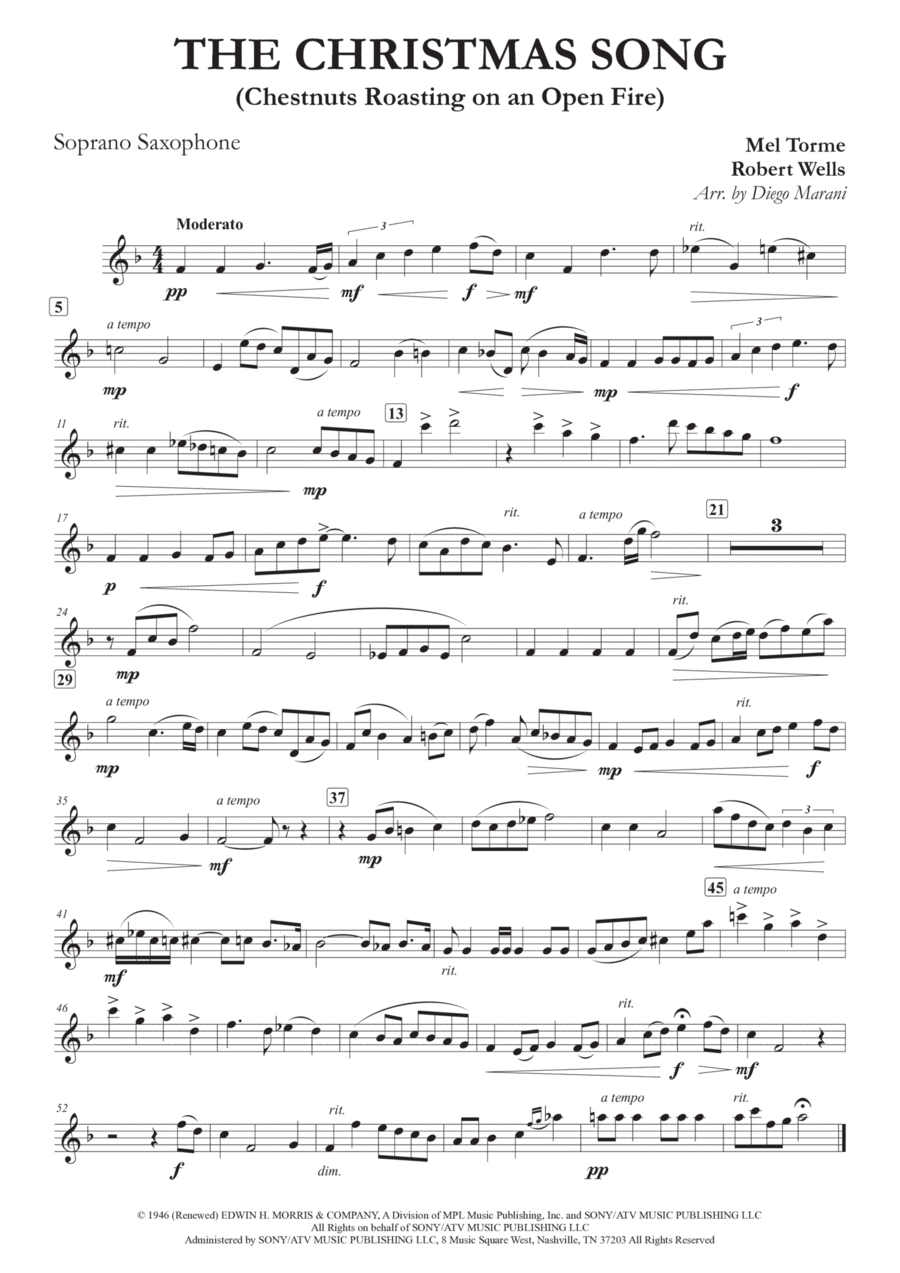Saxophone Quartet,Woodwind Ensemble Alto Saxophone,Baritone Saxophone,Soprano Saxophone,Tenor Saxophone - Level 3 - Digital Download SKU: A0.1117674 By King Cole Trio. By Mel Torme and Robert Wells. Arranged by Diego Marani. 20th Century,Christmas,Instructional,Jazz,Standards. 9 pages. Diego Marani #719218. Published by Diego Marani (A0.1117674). The Christmas Song (commonly subtitled Chestnuts Roasting on an Open Fire or, as it was originally subtitled, Merry Christmas to You) is a classic Christmas song written in 1945 by Robert Wells and Mel Tormé. The Nat King Cole Trio first recorded the song in June 1946. The Christmas Song has also been covered by Ariana Grande, Camila Cabello, The Carpenters, Celine Dion, Ella Fitzgerald, Elizabeth Gillies, Frank Sinatra, The Jackson 5, John Legend, JoJo, Justin Bieber, Kenny Burrell, Luther Vandross, Mary J. Blige, Ne-Yo, NSYNC, Pentatonix, Peter Hollens, Shawn Mendes, and Toni Braxton among others. This arrangement for sax quartet is suitable for classroom, repertoire and recital.
